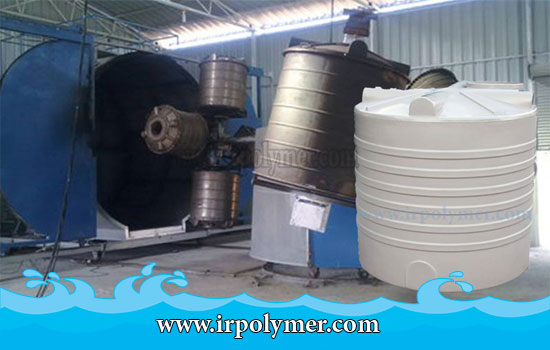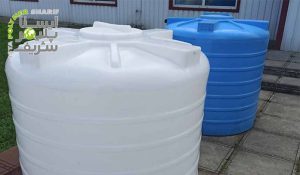Polyethylene tanks for storing various liquids are available in different materials, shapes, and sizes. This article will focus on the production of polyethylene tanks and the manufacturing process. Polyethylene tanks are produced using rotational molding or rotomolding. This production process utilizes polymer science and industrial polymer machinery. In the production of plastic tanks, thermoplastic materials such as polyethylene are commonly used. This polymer, with its low density and excellent physical, mechanical, and chemical properties, is stable against various environmental factors and has a long lifespan, making it particularly suitable for the production of water tanks. The rotational molding method will be discussed in detail below.
Molding of Polyethylene Tanks
One branch of polymer science deals with plastics and molding processes. Rotational molding is a type of plastic shaping process that occurs at low pressure and high temperature. This method allows for the production of hollow objects in a seamless and stress-free manner. The production speed with this process is very high. Additionally, it is more cost-effective compared to other methods or the production of metal tanks.
Complex shapes can be designed and produced with various molds. The waste produced by this method is minimal, which reduces the consumption of raw materials, contributing to the economic efficiency of this method for tank production. In this process, the working pressure is 1 atmosphere, and the materials melt inside the mold. Several factors need to be considered in this process, including temperature, molding time, cooling speed, mold rotation speed, and rotation axis speed ratio.
Steps in the Production of Polyethylene Tanks
- Charging or Filling the Mold: In this stage, the designed mold is opened, and a predetermined amount of polymer materials in the form of granules or powder is poured into the mold.
- Heating: After the mold is charged with polymer materials, it is closed and rotated around two designed vertical axes inside the oven. Heat transfer throughout the mold melts the polymer materials, filling the interior surface of the mold uniformly with polyethylene.
- Cooling the Mold: After the shaping stage, the temperature of the mold must be reduced. The rotating mold is then moved to cooling areas. Cooling occurs through airflow or water spraying. Once the mold cools, the shaped object separates from the metal mold and can be easily removed.
- Removal and Unloading of the Tank: Finally, the specialized molding machine stops, and the molded piece, which is seamless and has a completely smooth surface, is removed from the mold.
Using the rotational molding process can reduce energy costs by up to 70% and save production time. New machinery has multiple arms, and mold design can vary in wall thickness. Rotational molding is uniform compared to the two-page blowing method. The production of polyethylene tanks requires cooling and heating stages; however, if an epoxy resin that cures is used, external heating is not necessary.






